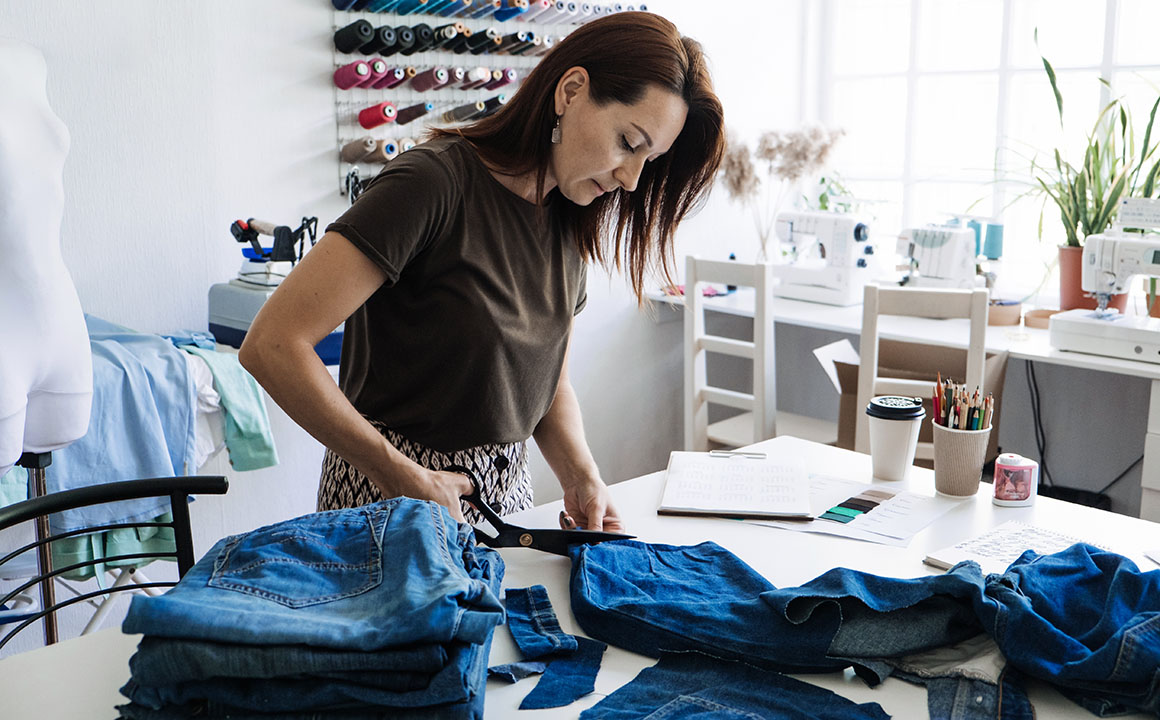How Do Big Fashion Brands Upcycle Clothing?

The fashion industry has a major sustainability problem. It is no secret that fashion is exceedingly wasteful in many different ways, from the abundance of resources required to create and manipulate textiles to the colossal transportation efforts of getting clothing into consumers’ hands. Worst of all, the fact that fashion trends shift constantly and quickly means that much of the clothing manufactured perhaps worn only a handful of times before being tossed in the trash.
Fortunately, there is a better way: upcycling. A few big fashion brands are working to reduce their environmental impact by accepting old clothing and transforming it into something new to keep it from polluting the earth and sea. If you are interested to know how fashion upcycling works, keep reading for more information.
What Upcycling Is
Recycling is the process of breaking down items into raw materials for manufacture into new products. Recycling is possible in fashion: Mechanical recycling involves shredding fabric back, and chemical recycling uses chemicals to dissolve fabrics. In both cases, the resulting fibers can be rewoven into new textiles and clothing. However, recycling is rarely cost-effective, and the energy consumed as well as the chemicals used can do further harm to the environment.
Though often used interchangeably, upcycling and recycling are two different sustainable processes. Unlike recycling, upcycling involves transforming existing fabric into a new product, without the time- and energy-intensive process of breaking it down. Sometimes, brands will use leftover fabric stock to make upcycled clothing; other times, brands will dismantle unsold clothing or take in clothing donations as materials for upcycled goods.
Why Upcycling Matters
The primary benefit of upcycling is in its potential for significantly reducing the waste of the fashion industry. Currently, fashion is the fourth highest polluting industry in the world, accounting for over 10 percent of global emissions. Worse, the natural resources required to produce new clothing can be immense; to grow and manufacture enough cotton for a single pair of jeans and a T-shirt, the fashion industry consumes over 5,000 gallons of freshwater, which might be better devoted to growing food — especially as available freshwater falls precipitously amidst melting glaciers.
While upcycling is not the best and only solution to the wastefulness of the fashion industry, it is certainly a more sustainable practice than merely throwing away usable fabric and clothing. By participating in upcycling, brands demonstrate their commitment to changing and improving fashion industry practices and doing their part to stop destructive cycles that contribute to climate change.
What’s more, upcycling can radically improve the wellbeing and lifestyle of struggling communities. Some upcycled clothes are sold to consumers — sometimes without consumers being any wiser about the source of the material used in their wardrobe. However, a significant portion of upcycling programs aim to use what would otherwise be waste to improve the lives of marginalized and disadvantaged groups. In fact, some of the biggest brands donate their upcycled clothing to homeless shelters or impoverished communities in other countries.





Leave a Comment